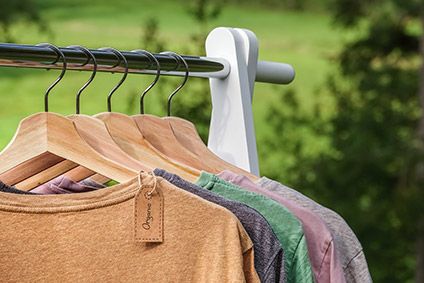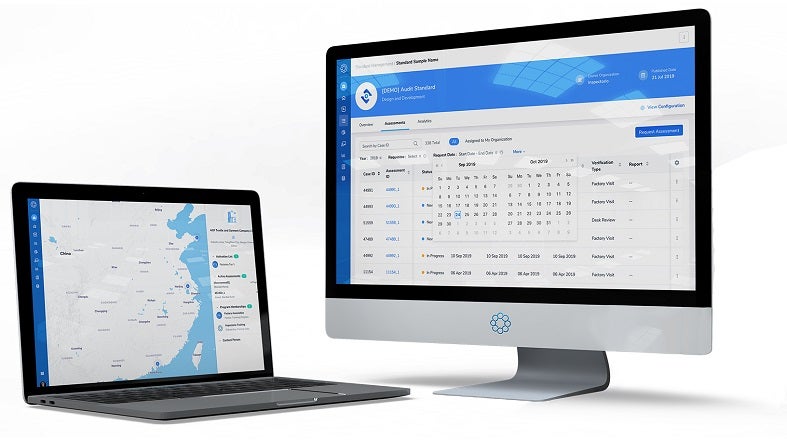
Buy less, buy better is key to sustainability in fashion
For too long, sustainability lurked outside the C-suite, by the water cooler and on the cutting room floor. Now, largely due to changes in the priorities of citizens and businesses since the Covid-19 outbreak, sustainability is truly at the fore.
Often the focus is largely on how brands and companies can change their operating plans to reduce their footprint. However, a change in the behavior of citizens (what and how they buy) can also be very influential when it comes to reducing environmental impact. The global fashion and textile industry has become a priority not only at the brand level, but also at the legislative level. Key jurisdictions are setting bold and ambitious goals that will ultimately drive better design and purchasing decisions.
While the war on plastic waste has been dominated by packaging and single-use products like drinking straws and plastic bags, less attention has been paid to the plastic inside our clothes. According to 2017[LG1] Fiber of the Year Report, in 2016 alone, 65 million tons of plastic for textile fibers were produced. However, many citizens fail to make the connection between fiber and origin: that synthetic fibers are made from plastic and are derived from fossil fuels. What is even more alarming is that the Fossil Fashion 2021 report, published by Changing Markets, found that the production of synthetic fibers for the textile industry currently accounts for 1.35% of global oil consumption. This exceeds the annual consumption of oil in Spain. And if the fashion industry continues as usual, in less than 10 years, almost three quarters of our textiles will be produced from fossil fuels.
In fact, many global wardrobes have become a place of shame. Clothes hang there, untouched for years, while the newest and cheapest clothes burst into a frenzy. McKinsey reports that the amount of clothing has increased by more than 60% in the 15 years since 2000, while there has been a 40% drop in the amount of time clothing is worn, according to the Ellen MacArthur Foundation.

So how can we change this?
“We need to increase our education when it comes to fiber choice and the impact of fiber,” explains Laura Armstrong, general manager of marketing and communications for The Woolmark Company. The world authority on wool research recently found that while fabric is considered in purchasing decisions, it’s about feel, not environmental impact.
“We need to appreciate the impact of synthetics to really appreciate the benefits of wool and other natural fibers.” Using science-backed research, The Woolmark Company champions the ecological benefits of Merino wool: a 100% natural, renewable, biodegradable, and recyclable fiber.
“It’s not just about what we buy, it’s equally important to consider what we don’t buy and when we’re done with that product, what we do with it. Wool is one of the most durable fibers, it stands the test of time, stays in our closets longer than any other fiber, is the most donated fiber, and has excellent recycling value,” Armstrong explains. “No other fiber has such a unique, well-established, and commercially viable recycling path in both open and closed loop systems, allowing the fiber to remain in use and reuse for an indefinite period of time.”
With recycling going to be an increasingly important topic of debate, largely due to the ambitious targets set by the European Union, certain factors need to be taken into account. The nuances of this may not seem too relevant, but its implications are far-reaching. Take recycled polyester, for example, which comes almost entirely from plastic bottles. Many brands, large and small, champion the use of fiber and use it as a way to achieve their own sustainability goals. However, recycled polyester is still a synthetic fabric that spews microplastics into the air and ocean and can negatively impact human and marine health.
Recycling is just one piece of the circularity puzzle. Encouraging citizens to repair and reuse garments is essential in the circular economy. In fact, by encouraging better design and then repairing and reusing garments to keep them in use for longer, you alleviate the need to purchase new products and thus can not only slow down the rate of consumption but also reduce the amount of waste. waste produced. The frequency with which clothing is worn is perhaps the most influential factor in determining the environmental impacts of clothing. The industry can also play a vital role in educating consumers on the best care methods to extend the life of a product.
Make the right purchase decision
Choosing clothing and textiles made from renewable resources is another way to make better, less impactful purchasing and design decisions. For brands, by avoiding the use of non-renewable fibers derived from petrochemicals and fossil fuels and investing in natural, renewable and biodegradable fibers like wool and cotton, companies allow the farmers who produce these fibers to earn a decent income that allows them to reinvest in their farm. Regeneration is a key element of the circular economy. It is the transition from using finite fossil fuel resources to using renewable resources. It is about restoring and protecting ecosystems and returning biological resources to nature. Natural fibers are well positioned to be part of this regenerative movement. Wool, for example, comes from sheep, an animal that offers a remarkable service: they normally graze on land that is not suitable for growing food; they convert the pastures that do not serve humanity into food and fiber to feed and clothe humanity; help regenerate soil health and biodiversity; and are often taken to depleted farmland so they can rest and recuperate. How wonderful it is then, that the clothes we make and wear can be derived from animals or plants, which can help regenerate our land.
The term regenerative agriculture is still relatively new in the fashion industry; however, many Australian wool farmers have long used regenerative agriculture techniques to improve the biodiversity, fertility, health and carbon sequestration of their agricultural environment. By supporting the natural functions of the environment, regenerative agriculture is a holistic agricultural approach used by fiber producers that focuses on developing the biology and fertility of soils as the foundation of the entire agricultural ecosystem. By keeping soils healthy by producing these natural fibers, farmers can, in turn, help make the fashion industry more sustainable.
The journey towards a sustainable future is constantly evolving and the final destination has yet to be determined. A shared commitment is needed to forge a circular approach with all levels of the textile supply chain to accelerate and deliver sustainable solutions. Too often, work is done in silos, limiting scientific and innovative opportunities to close the loop.
“We work with partners throughout the supply chain to foster and deliver sustainable solutions,” Armstrong explains. “As a company, we invest in strong scientific data to first identify pain points both on and off the farm, and then collaborate and innovate solutions to these challenges.”
It is a great request for citizens to change their buying habits. We know very well that change does not happen overnight. By considering the impact of fiber and material, brands can inspire citizens to change their shopping habits to buy less but better; buy transseasonal, timeless garments made to last, and buy garments made with fibers that help regenerate our planet.
About the author: Lisa Griplas is the Global Sustainability Communications Strategist for The Woolmark Company. With over 15 years of experience in marketing and communications, she has a strong background in directing content strategy and now specializes in sustainability communications. Her expertise lies in helping stakeholders understand, manage and scale their sustainability performance to drive positive, truthful and meaningful conversations. Lisa’s knowledge of textiles and fibers, and her impact, allows her to help evolve the business towards a sustainable future. Prior to joining The Woolmark Company, she was a journalist reporting on a variety of different areas, honing her writing and research skills for a wide audience.
Related companies

WFX (World Fashion Exchange)

inspectorate

Source: news.google.com